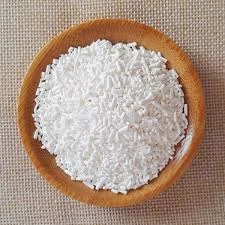
color additives in food
The Role of Color Additives in Food
Color has an undeniable impact on our perception and enjoyment of food. From the bright red of a ripe strawberry to the deep green of kale, colors can influence our choices and even our taste experiences. In the food industry, color additives play a significant role in enhancing the visual appeal of products, but their use also raises important questions about safety, regulation, and consumer awareness.
Understanding Color Additives
Color additives, also known as food colorings, are substances that are added to food and beverages to impart color. They can be derived from natural sources, such as fruits, vegetables, and minerals, or they can be synthetic compounds created in laboratories. Both types of color additives are widely used in various food products, including candies, beverages, sauces, and baked goods.
Natural color additives, such as beet juice or turmeric, are often viewed as healthier options due to their origins. However, synthetic color additives, such as Red 40 or Yellow 5, are also popular because of their vibrant hues and stability. The choice of which type of color additive to use depends on various factors, including the desired color, the shelf life of the product, and production costs.
Safety and Regulation
In many countries, the use of color additives is regulated to ensure consumer safety. In the United States, the Food and Drug Administration (FDA) is responsible for approving food colorings. Before a color additive can be used in food products, it must undergo rigorous testing to evaluate its safety for human consumption. Only additives that have been deemed safe are allowed on the market.
Despite these regulations, concerns about the safety of certain artificial color additives persist. Some studies have suggested links between synthetic colorings and hyperactivity in children, while others have raised questions about potential allergic reactions and long-term health effects. As a result, the debate over the use of these additives continues, prompting some manufacturers to seek natural alternatives.
color additives in food

Consumer Awareness and Preferences
As consumers become more health-conscious, there is a growing demand for transparency and quality in food production. Many people are now scrutinizing ingredient labels, looking for natural colorings rather than synthetic options. This trend has led to a significant shift in the food industry, with many manufacturers reformulating their products to eliminate artificial colors in favor of natural alternatives.
This change is not just driven by health concerns; it is also a marketing strategy. Brands that promote natural ingredients often appeal to consumers who are willing to pay a premium for products that align with their values. Consequently, the market for natural food colorings is expanding rapidly, providing many options for businesses looking to keep up with consumer preferences.
The Future of Color Additives
The future of color additives in food is evolving. With ongoing research into both the safety of synthetic colorings and the effectiveness of natural alternatives, the landscape of food coloring is poised for change. Emerging technologies, such as biotechnology, are also playing a role in developing new color additives derived from natural sources.
Moreover, as regulations continue to adapt to consumer demand, we can expect to see greater transparency in food labeling. Consumers will likely become increasingly informed about the additives in their food, prompting manufacturers to be more accountable for their ingredient choices.
In conclusion, color additives are an integral component of the food industry, enhancing the appeal of products and influencing consumer choices. While concerns about safety and health implications remain, the growing preference for natural ingredients is reshaping the market. As we move forward, the importance of balance between visual appeal and health considerations will be vital in guiding the use of color additives in food.
-
Pure Sodium Dichloroisocyanurate Dihydrate | Powerful DisinfectantNewsAug.29,2025
-
Industrial Chemicals: Quality & Purity for Every IndustryNewsAug.28,2025
-
Nitrile Rubber Honoring Strict Production StandardsNewsAug.22,2025
-
Aspartame Ingredients Honoring Food Safety ValuesNewsAug.22,2025
-
Fertilizer for Balanced Plant NutritionNewsAug.22,2025
-
Cyanide Gold Processing with High Purity AdditivesNewsAug.22,2025
-
Formic Acid in Textile Dyeing ApplicationsNewsAug.22,2025
Hebei Tenger Chemical Technology Co., Ltd. focuses on the chemical industry and is committed to the export service of chemical raw materials.
-

view more DiethanolisopropanolamineIn the ever-growing field of chemical solutions, diethanolisopropanolamine (DEIPA) stands out as a versatile and important compound. Due to its unique chemical structure and properties, DEIPA is of interest to various industries including construction, personal care, and agriculture. -

view more TriisopropanolamineTriisopropanolamine (TIPA) alkanol amine substance, is a kind of alcohol amine compound with amino and alcohol hydroxyl, and because of its molecules contains both amino and hydroxyl. -

view more Tetramethyl Thiuram DisulfideTetramethyl thiuram disulfide, also known as TMTD, is a white to light-yellow powder with a distinct sulfur-like odor. It is soluble in organic solvents such as benzene, acetone, and ethyl acetate, making it highly versatile for use in different formulations. TMTD is known for its excellent vulcanization acceleration properties, which makes it a key ingredient in the production of rubber products. Additionally, it acts as an effective fungicide and bactericide, making it valuable in agricultural applications. Its high purity and stability ensure consistent performance, making it a preferred choice for manufacturers across various industries.





